‘Week one: water, week two: fur and feathers…’ – that’s how The Mill VFX supe David Houghton had to approach the creation of more than 500 visual effects shots for the new 12-part Sky TV series Sinbad, currently airing in the UK. We go behind the scenes to learn how The Mill made complex environments, creatures and magical effects for the weekly show.
Building Basrah
The show’s first episode sets up Sinbad (Elliot Knight) as part of a fighting ring in Basrah. The Mill realized shots of the city as a mix between live action shot in Valletta, Malta and full CG fly-overs. Oftentimes a CG shot would transition into a real streetscape. “I knew we could get some great shots of the city with its 16th century architecture and build over the top,” explains Houghton, “so we got up in a helicopter and flew around Valetta and the Great Harbour area for a day.”
The final Basrah scenery had been concepted beforehand, so the live action could be augmented with generic 3D buildings using Cinema 4D. “We built up a little kit-bag of buildings to build the cityscape,” adds Houghton. “And we did the same thing with the Emir of Basrah’s palace. We found a lovely fort and shot that from a helicopter and built on top of the existing structure.” A more 2D approach was adopted for the city featured in episode 2. It was designed with a Mayan/Aztec look and established via matte paintings done in Photoshop.
Ship at sea
The pilot episode also features the Providence, a ship Sinbad stows away on board. For scenes of The Providence at sea, production filmed a real boat motoring along either from a helicopter or from the shore, and then replaced it with a CG version built in Maya. The original footprint helped with tracking and creating water wakes. The CG Providence was modeled based on a life-size boat set built in a deep tank in Malta (this allowed for shots with a real seascape behind the filmed action). The boat did not have a hull, but instead was placed on a turntable. The Mill added CG sails created in nCloth, as well as digi-doubles of the actors for wide shots at sea. Stormy water sequences were created with water sims done in Houdini and RealFlow. Other ship shots in the series also relied on footprint boats and CG stand-ins.
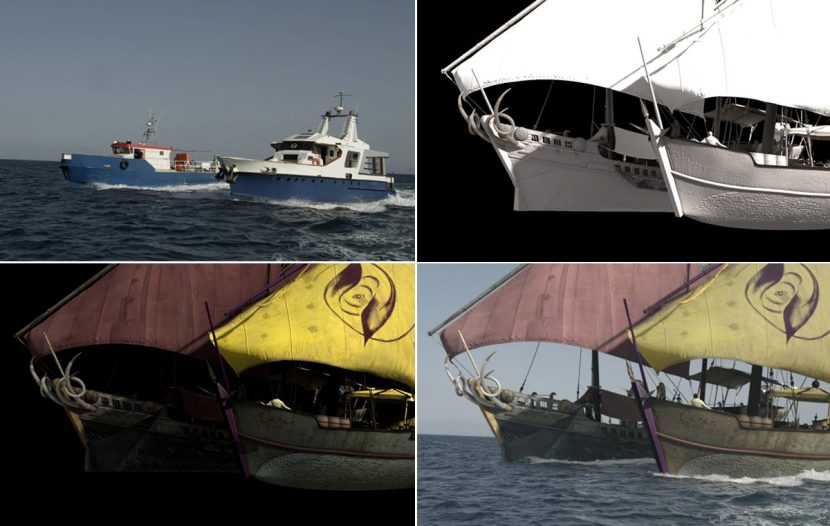
Watery demon
At sea, the Providence crew are attacked by magical water creatures. “They was literally made from water,” says Houghton, “a concept difficult to fathom because you’re trying to come up with something that was refractive and reflective and constantly moving. But the idea was that the show’s creatures were less physical as a rule and more elemental. They were going to be made from elements – water, salt, shadows, for example.”
“We drew up some drawings to get the basic look of the water creature that would drive the water simulations,” continues Houghton, “and we also were working on a water sim at the same time using a previous creature we’d created for Primeval to do some water tests.”
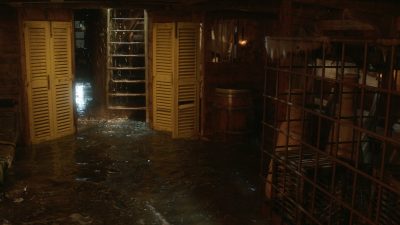
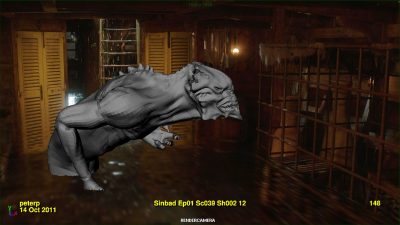
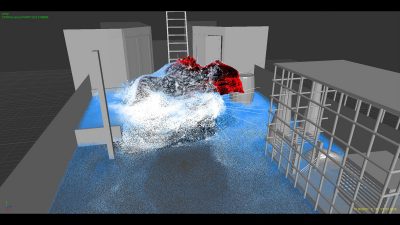
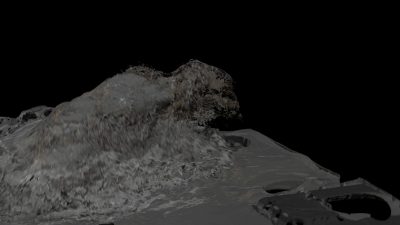
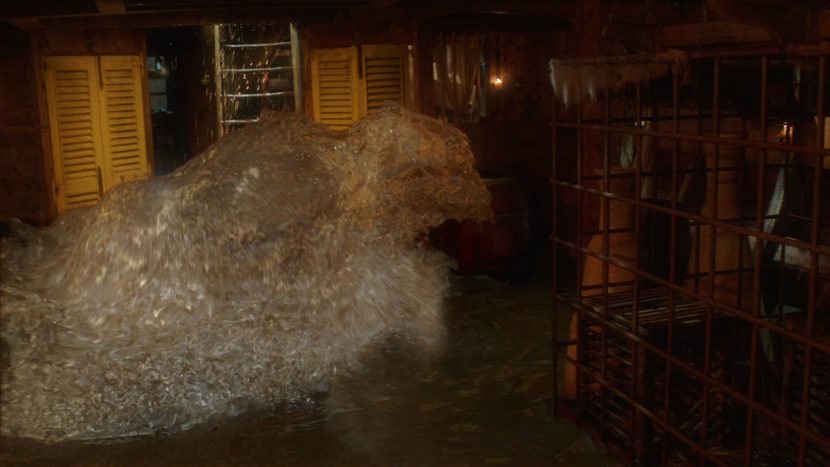
The Mill animated the water creature in Maya and then worked in Houdini for the water sims. One sequence took place below deck when Sinbad and ship doctor Anwar encounter the beast. “The animators created a very simple grayscale animation of the water creature reacting and interacting with the cast,” explains Houghton. “Once the creature animation had been approved, it was taken into Houdini, where we created the skirt which connects the water of the CG creature and the water from the set (about a foot deep). Then on top of that laid our own water plane.” Houghton had the below-deck set surveyed so that the water sims would react to the whole environment. The many sim passes for the water splashes as well as watery textures for the creature itself were composited in Nuke.
Feathers and fur
In episode 2, Sinbad becomes a captor of Water-Thieves, but escapes thanks to the help of a giant mythical bird known as the Roc. Having been chained up for many years, the Roc is incredibly scraggly – The Mill gave it a combination of feathers and fur, along with lion and reptilian features. It was created in Maya, with feathers effectively built as hairs with textures.
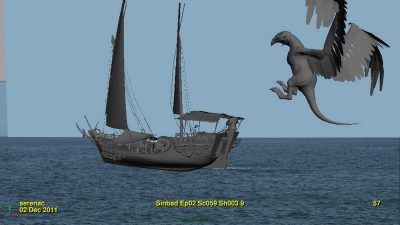
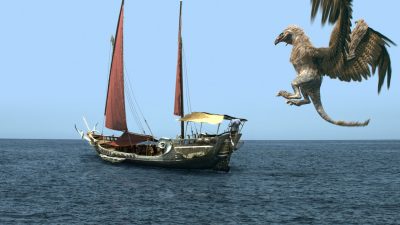
On set, Elliot Knight could interact with a greenscreen neck piece loosely puppeteered to stand in for the Roc. Scenes in a confined torch-lit room required HDRIs, a lot of reference photography, but no locked-off cameras. “I really wanted to allow the directors and DP a lot of freedom to move around,” says Houghton. “In the end we were able to give the Roc a lot of personality. It was a great opportunity to create a character, which is sometimes unusual for monster shows.”
Watch The Mill’s episode 2 breakdown, featuring city matte paintings and the Roc.All images and clips courtesy of The Mill.
